"I Attract Positive Vibes And Magic Into My Life"

"I Attract Positive Vibes And Magic Into My Life"
Note when drawing: The bottom-most curve in the little bottom diamond curves up then slightly down as it approaches the left edge of the diamond, that line uses 2 curves idk why I drew it to look so subtle when I made it, sorry
You can either carry this with you, or Meditate with it, or Sleep with it in or under your pillow or mattress, or Burn the sigil into ash and sprinkle the ashes into the shoes you wear when you go out or go to work
More Posts from Zen-the-wizard and Others









Happy Summer Solstice

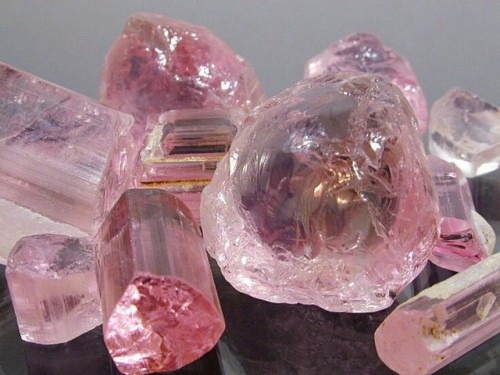
Pink crystal magic

🌌 Witchcraft PSA: The Chakras & Cultural Appropriation ❌

Warning: This is probably the longest post I've written so far, so be prepared for a VERY long read.
Disclaimer: I do not claim to be an expert, a historian, or a theologist. I am simply a witch, a student, and a POC living in the United States where many aspects of pagan spirituality are often appropriated from other cultures and perpetuated through simple ignorance. I'm sure this post will generate some type of controversy, but I do not mean to attack anyone or their beliefs with this post.
So. Here's the big one, guys. The post I've been dreading making but have really wanted to write for a while.
Cultural appropriation is one of the hottest topics in the modern witchcraft community, and the discourse about it on tumblr is far-reaching and incendiary at best. The problem: Where should witches draw a line between explorational spirituality and cultural appropriation?
I'm not here to lay down laws of morality. I'm not the cultural police. But I DID have a very eye-opening experience recently that led me to create this post.
I'm a white-passing minority, and I won't pretend that this doesn't lend me a degree of privilege in America. Especially as a witch, many doors are open to me. Just within the witchcraft community, I look white enough to be welcomed whole-heartedly into most neopagan circles. That's not to say that blatant racism is abundant within the pagan community, but we can't deny that many non-white cultural practices are heavily stigmatized. For instance, as SOON as any of my "light worker" friends hears that I have a family background in Santeria and Brujeria, the FIRST thing I hear is, "Oh, I don't mess with that dark stuff," or "Well, I don't like the idea of hurting animals and other people." And don't get me started on the ignorant conversations one of my dark-skinned, Vodou-practicing friends has had to sit through before.
Like, what?
Because of this, I'm often the first person within my social circles to stand up for cultural barriers and denounce cultural stigma. Above all else, I try to respect the hell out of closed cultures and educate myself about cultural appropriation.
So, it was much to my dismay when I discovered that I have been culturally appropriating the chakra system for the last 11 years of my witchcraft practice.
The chakra system and its use in western occultism is one of the most heavily debated topics in the witchblr community. A simple search will yield dozens upon dozens of posts, each filled with witches claiming that usage of the chakra system either IS or IS NOT appropriation. For the most part, I've tried to stay out of this debate. I've incorporated the chakras into my practice since I began, but I thought my oriental heritage and my "thorough" understanding of the chakras made this okay. But, lo and behold, I was sorely mistaken.
So, after some deep research into this topic, and after talking to several Hindus and Buddhists, here's my attempt to shed some light on this issue.
What are the chakras (according to Western occultism)?

As a brief overview, the chakras are believed to be spiraling energy centers that exist within the subtle body. There are seven of them, and they lie along the spine in places where large amounts of nerves and vital organs exist. Similar to the way our brain is a large compilation of nerves, these chakras are believed to be the intersection points of energy currents within our spirit.
Each chakra rules over a particular psychological, physical, and spiritual state of being, and disruptions within the chakras are believed to lead to different types of mental, emotional, and physical illnesses.
These chakras are depicted as lotus flowers with varying numbers of petals, and each is represented by its own color. Each one also corresponds to a Sankskrit syllable mantra which is believed to activate the chakra when spoken aloud.
In order, they are:
❤ Muladhara - The Root Chakra - Connection to the Earth and the Self - Located at the base of the spine - Depicted as a red lotus with 4 petals - Mantra: LAM
🧡 Swadhisthana - The Sacral Chakra - Connection to sexuality and instinct - Located near the sexual organs - Depicted as an orange lotus with 6 petals - Mantra: VAM
💛 Manipura - The Solar Chakra - Connection to will and identity - Located in the Solar Plexus - Depicted as a yellow lotus with 10 petals - Mantra: RAM
💚 Anahata - The Heart Chakra - Connection to love and relationships - Located in the heart - Depicted as a green lotus with 12 petals - Mantra: YAM
💙 Vishuddha - The Throat Chakra - Connection to voice and communication - Located in the heart - Depicted as a blue lotus with 16 petals - Mantra: HAM
💜 Ajna - The Third Eye Chakra - Connection to spiritual awareness - Located above and between the eyes - Depicted as a purple lotus with 2 petals - Mantra: OM
🌈 Sahastrara - The Crown Chakra - Connection to Source/the Universe - Located at the top of the head - Depicted as either a purple, rainbow, or white lotus with 144,000 petals - Mantra: Silence
Along with these associations, each chakra is often associated with various crystals, herbs, and spirits.
What are the chakras within their original cultural context?

The concept of 'chakras' arose from a practice known as Tantric Yoga. This was a spiritual system that began to gain popularity in India and other eastern cultures between 600-1300 CE. Up until this point (and concurrently as well), most types of spirituality in these cultures was very transcendental - that is, they had a fundamental belief that the Divine was transcendent and inherently 'above' the natural world. Therefore, in order to commune with the divine, it was believed that the material world had to be renounced and denied, and higher states of consciousness had to be achieved in order to commune with divinity.
Tantric spirituality flipped the script. It adopted the idea that divinity was an inherent quality of the natural world, and that a person could freely commune with the divine by opening themselves up to the world around them through mindfulness and all-embracing compassion.
The philosophies and teachings of tantric yoga (loosely known as 'tantras') became extremely widespread throughout this period and dramatically shaped many emerging sects of Hinduism and Buddhism. As this philosophy spread, many different types of specific spiritual practices arose, many of which can be recognized in our Western ideas of holistic meditation - such as mantras, mudras, mandalas, and even modern Western yoga.
One such concept that gained popularity was the idea of chakras - focal points of spiritual energy in the body. However, these chakras were very different than what Westerners think of today.
There were a LOT of different traditions that arose from Tantric teachings, and each one had its own unique belief about chakras. The most obvious difference between these chakra traditions was that each one believed in a different number of chakras. Some systems had three, others had six, others had seven, others had nine, others had 10, others had 21, etc.
Each one approached the chakras a bit differently, and so each one believed in a different number of chakra centers.
What are some of the primary differences between Western Chakras and Tantric Chakras?

The most eye-opening difference for me was that Tantric chakras have none of the associations that Westerners believe in today. Original practitioners of Tantric spirituality did not associate specific colors with each chakra, they did not associate physical or psychological states with them, they did not associate any herbs or crystals or planets with them, and they did not even associate Sanskrit syllables with them. What's more, they didn't even believe they were located in fixed points on the body.
Loosely, they believed that the chakras - like all things spiritual - were very fluid. They could often be accessed through general areas of the body, but they definitely were not stagnant, fixed points. This also accounts for the varying number of chakras, because it was believed that the chakras would manifest in different ways depending on what traditional practice you used to approach them.
Many traditions did believe that these chakras could be depicted as lotus flowers with various petals, but these were not meant to inherently describe the individual chakra. Rather, these depictions were meant to serve as a visualization for a person to meditate on when trying to access a specific chakra.
Along with this, these traditions did not assign specific names or syllables to these chakras - at least not the ones we use today. Rather, it was believed that Sanskrit syllables carried an inherent magic or divine energy within them (similar to Kabbalistic views of the Hebrew language), and they assigned various letters and syllables to the petals of each lotus flower, which corresponded to various energies in nature.
The symbols, names, and Sanskrit syllables popularized in the West today don't even correspond to any kind of Tantric chakras. They actually correspond to the elements within certain traditions of eastern spirituality. They also are not meant to be uniquely associated with any individual chakra. Rather, these syllables were used in meditation to invoke specific elemental energies into different chakras depending on the situation.
If your tradition believed that the heart chakra could affect the relationships in your life, and your personal relationships happened to be very stagnant, you could vibrate the syllable for the Wind element and invoke that energy into your heart chakra to help your personal relationships become more dynamic. Etc.
This brings me to the final thing I'd like to talk about: Westerners are NOT using the chakras for their original purpose.
The only concrete associations that tantric traditions had for the chakras were deities. These traditions believed that each of their chakras was associated with a specific Hindu deity (though the specific order or deities listed varies between tradition and time period).
The original purpose of 'working with chakras' was to eventually invoke the energy of these specific deities into a person's chakras in order to become closer to these gods and goddesses and emulate their behavior and teachings in daily life.
How did the original concept of chakras get misconstrued in Western culture?

Oh, boy. This is a tough answer that's soaked in 1000 years of colonialism, racism, cultural and linguistic barriers, and simple misunderstandings.
But, simply put, the appropriation of tantric chakras can be narrowed down to four specific individuals.
In 1577, a spiritual teacher and academic named Purnananda Yati wrote a treatise of tantric teachings called the Shatchakra Nirupana, or roughly 'An Explanation of the Six Chakras'.
In this treatise, Purnananda lays out the modern framework we see today - six chakra centers within the human spirit, with an additional seventh chakra above the head that connects the spirit to the divine source. He based this concept off of an earlier writing from the 13th century, which also details this framework but openly acknowledges that this is just ONE tradition, and that many other traditions also exist.
In 1918, a British scholar named John Woodroffe translated Purnananda's treatise from Sanskrit into English, and unfortunately, there were many mistranslations in Woodroffe's version. This translation was what eventually gained extreme popularity throughout academic and occult circles in the West.
Throughout the 1930's, 40's, and 50's, the renowned European psychologist, Carl Jung (who you might recognize from your Psych 101 class), became fascinated with the idea of chakras and their relation to consciousness. Throughout this time period, Jung wrote extensively about potential connections between the seven chakra centers and various psychological states. This is where the chakras became associated with different states of being, such as instinct, will, and sexuality.
Finally, in 1987, an American occultist and spiritualist named Anodea Judith published a book entitled Wheels of Life. In this book, Judith talks extensively about the seven chakras, and even lists correspondences between the chakras and various herbs, crystals, elements, planets, tarot cards, deities, and archangels.
Her book became wildly popular within holistic and spiritual circles, and set in stone the way that modern neo-pagans view the chakras in the West.
So, are chakras part of a closed culture?

Yes and no.
Chakras as we view them in the West are, at best, a distorted and bastardized version of a beautiful, ancient belief. They were studied and theorized by many traditions for over a thousand years, and many of these traditions still exist today. Most commonly, they are still used in Shaivism, which is one of the most prevalent forms of Hinduism in the East.
Many of these living traditions ARE, in fact, closed. But more than that, to perpetuate (and worse, claim spirituality from) a distorted, white-washed version of an Eastern religious belief is just plain disrespectful and potentially racist at its worst.
That being said, though, there are certain living traditions which ARE NOT closed, such as the exceedingly popular Tibetan Buddhism. These traditions recognize many of the same teachings and are freely shared with people of any nationality or background - as long as you put in the work to learn about them.
The Main Takeaway

The chakras, as viewed in the West, are incorrect. This is not to disclaim any type of spiritual experience Westerners may have had by utilizing chakras in their practice, but I'm of the opinion that Westerners should recognize that the "chakras" they believe in don't actually have any basis in ancient spirituality.
That being said, the concept of a subtle body and energy centers within the human spirit is not unique to the Far East.
The concept of currents and centers of energy within the body can be found in cultures the world over, from India to Japan to Korea to Africa to the Middle East, and even among the Native Americans who never came into contact with these other cultures (as far as we know).
The human soul, the subtle body, and spiritual energy are concepts that supercede cultural boundaries, and if studying and utilizing them is an integral part of your craft, then I encourage you to follow your personal path and find connection with the Universe in whatever way you feel called to.
But. Perhaps developing your own unique system and beliefs about the energy centers within the body is the best course of action for us Westerners. Until we ourselves make the effort go join one of those (open) traditions, subscribing to the modern Western system of "chakras" is, in my opinion, cultural appropriation.
• • •
Brightest blessings, and best of luck 🌙
⚡️How to Enchant Items⚡️
This is a basic guide on how to enchant everyday objects from necklaces and rings to phones and laptops. Whatever you want to enchant, go ahead and charm it! ⚡️This is not the only way to look at enchantment or do enchantments! Practice and explore to find what suits you best.⚡️

To break it down, enchanting is just giving an item purposed energy. All you need is intent + an energy source! The correspondences of that energy source will be transferred to your object. For example, I could take a necklace and leave it in the sunlight so the sun’s energy can be transferred to the necklace to give me energy, warmth, and confidence (those are my correspondences of the sun). Tada! That necklace is now enchanted! ⚡️Examples of energy sources: the sun, the moon, the weather, yourself, plants, herbs, crystals, electricity, the elements, sigils, etc.⚡️ You can also say a quick chant before or during the charging stage (charging is giving an item energy; the difference between charging and enchanting is that charging is giving an object energy without a specific purpose while enchanting involves giving an object purposed energy) to make that energy have a specific purpose. For example, I could take a ring and leave it on top of a rose quartz crystal and say, “This ring shall be energized with love.” Tada! That ring is now enchanted with the specific purpose of having loving energy! Rather than having all the correspondences of rose quartz transferred to my ring, it is now just the love aspect that has been given to my ring. So, how do you use these items once they’re enchanted? Just keep them close to you! If you want to be confident, for instance, I’d recommend enchanting a necklace and wearing it around your neck so that it’s closer to where you talk and also closer to where you think. You can also leave them in places where you reside in the most since some of your energy will linger there, such as your bedroom, your most frequented restaurant, etc.
⚡️Common energy sources: crystals, the sun, the moon, herbs, the elements, your own energy, a tarot deck, electricity, lit candles, incense, essential oils⚡️
Elements And Their Correspondences
Earth

Direction: North
Time: Midnight
Season: Winter
Color: Green, brown
Zodiac: Taurus, Virgo, Capricorn
Ruling planets: Venus and Saturn
Tarot Cards: Pentacles, Coins
Tools: Pentacle, salt, stones, dirt, crystals, wood, flowers
Cystals: Emerald, Jet, tourmaline, quartz, onyx, azurite, amethyst, jasper, peridot, granite.
Animals: gopher, bear, wolf, ant, horse, stag, deer, dog, cow, bull, bison, snake, worms, moles, voles, grubs
Herbs: Oak, cedar, cypress, honeysuckle, ivy, primrose, sage, grains, patchouli, nuts, magnolia, comfrey, vetivert, moss, lilac, lichen, roots, barley, alfalfa, corn, rice.
Rules: Grounding, strength, healing, success, stability, sturdiness, steadfastness, foundations, empathy, fertility, death, rebirth, wisdom, nature, animals, plants, money, prosperity.
Water

Direction: West
Time: Dusk
Season: Fall
Color: Blue, Indigo, Sliver
Zodiac: Cancer, Scorpio, Pisces
Ruling planets: Moon, Neptune, Pluto
Tarot Cards: Cups
Tools: Ocean, sea glass, cup, bowl, seaweed, hag stones, cauldron
Cystals: Moonstone, pearl, silver, aquamarine, amethyst, blue tourmaline, lapis lazuli, fluorite, coral, blue topaz, beryl, opal, coral
Animals: fish, snake, frog, crab, lobster, eel, shark, dragonfly, seahorse, dolphin, sea otter, seal, whale, alligator, crocodile, beaver, octopus, penguin, salamander, turtle, starfish, koi, coral, barnacle, manta ray, manatee, jellyfish, nautilus, heron, duck, geese, crane, swan, water birds, ammonite, dragons, serpents
Herbs: seaweed, aloe, fern, water lily, lotus, moss, willow, gardenia, apple, catnip, chamomile, cattail, lettuce, kelp, birch, cabbage, coconut, cucumber, comfrey, eucalyptus, gourd, geranium, grape, licorice, lilac, pear, strawberry, tomato
Rules: emotion, intuition, psychic abilities, love, unconscious mind, fertility, self-healing, reflection, lunar energy, deep feelings, curses, death
Fire

Direction: South
Time: Noon
Season: Summer
Color: Red, Orange
Zodiac: Aries, Leo, Sagittarius
Ruling planets: Sun, Mars
Tarot Cards: Wands or Swords (depends on belief system)
Tools: Athame, candles, swords, wands, dagger, lamp, flame
Cystals: Carnelian, red jasper, bloodstone, garnet, ruby, agate, rhodochrosite, gold, pyrite, brass, fire opal, lavastone, tiger's eye
Animals: Lion, snake, coyote, fox, ladybug, bee, shark, scorpion, horse, mantis, tiger
Herbs: Cinnamon, cloves, ginger, allspice, basil, cacti, marigold, chilis, garlic, mustard, nettle, onion, heliotrope, hibiscus, juniper, lime, orange, red pepper, poppies, thistle, coffee, jalapenos, lemon, cumin, saffron, coriander
Rules: Energy, will, destruction, strength, courage, power, passion, lust, sexuality, anger, war, new beginnings, protection, loyalty, transformation, action, movement, achievement, creativity, desire, willpower
Air

Direction: East
Time: Down
Season: Spring
Color: Yellow, gold, white, light blue, pastels
Zodiac: Gemini, Libra, Aquarius
Ruling planets: Mercury, Jupiter, Uranus
Tarot Cards: Wands
Tools: Feather, wand, staff, incense, broom, bell, sword, pen
Cystals: Amber, topaz, citrine, jasper, agate, pumice, alexandrite, amethyst, fluorite, mica, clear quartz
Animals: Birds, flying insects, spiders, bats
Herbs: Bergamot, lavender, marjoram, peppermint, sage, dandelion, bluebell, clover, frankincense, primrose, lemongrass, pine, aspen, yarrow, violets, vervain, myrrh, dill, anise, aspen
Rules: Intelligence, wisdom, knowledge, logic, thought, communication, truth, inspiration, intuition, memory, creativity
Tip jar

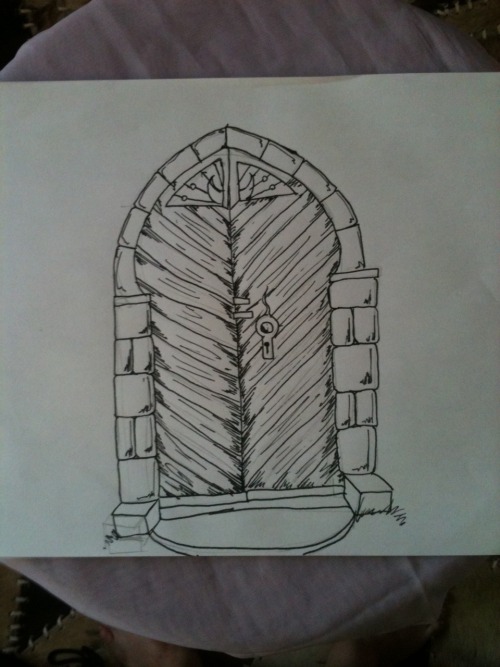

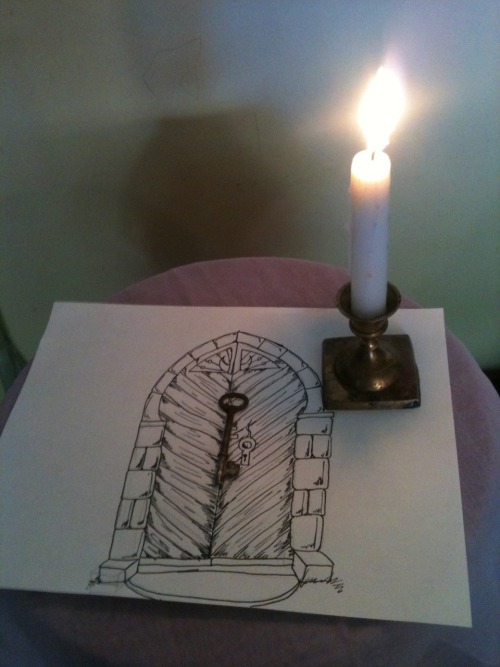
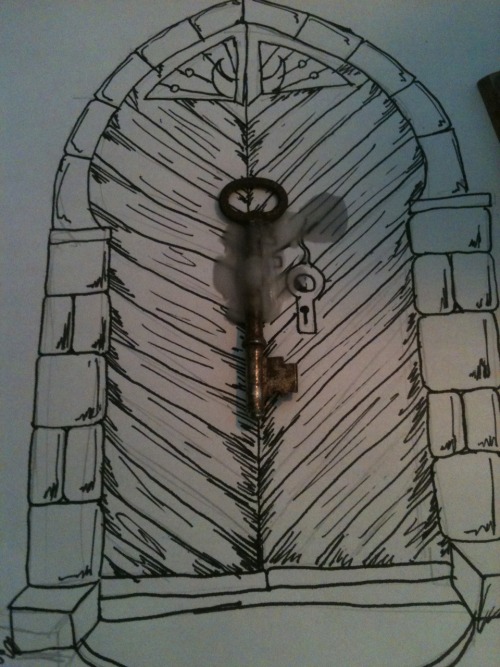

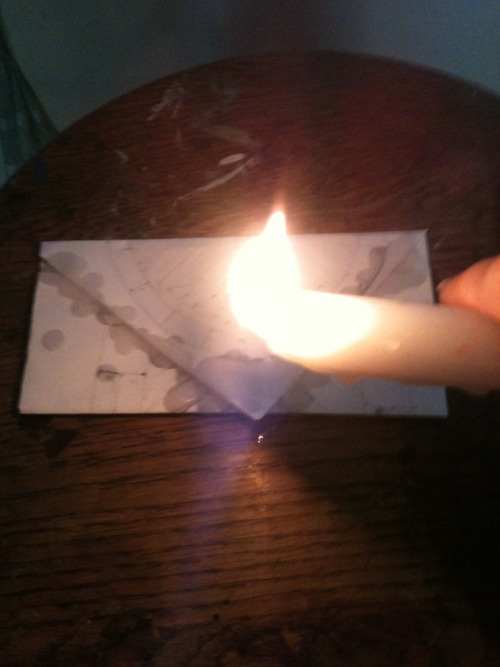
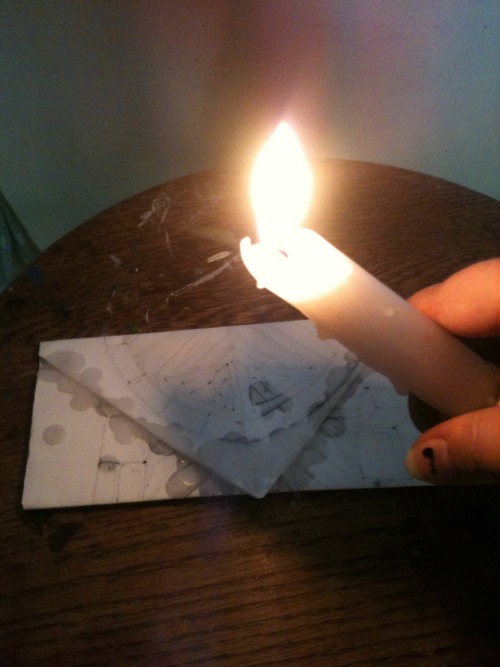

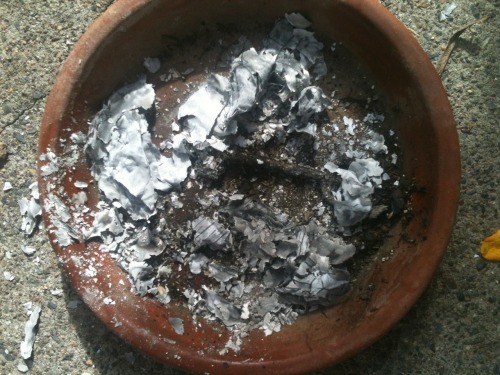
lt;p>)0( The Key to Happiness )0( ~Spell~
~<p>With a key at hand , light a white candle. Visualize the metaphorical door you wish to open with the key. ~On a piece of paper draw a door that will open to your wish. <p> Pour some candle wax on the drawing of the door and place the key in the wax, to weld the two together. ~Let the wax cool. ~Fold the paper around the key to form a neat envelope or parcel. ~General seal all the edges with wax from the candle. ~Blow out the candle. ~ At night , toss the parcel into a fire, imagining as vividly as possible the door you are passing through. Pour your passion into the flames and send your desires upward. ~The spell has been cast do not dwell on your wish, because such thoughts drag it back to earth and sap it of its energy.
~Have faith in your desire becoming fulfilled. :)
~Happy casting ! :D
~The Witch Darkest of Lights





Witch Intern by Jeremy Jhang

-
 squibshideout liked this · 1 month ago
squibshideout liked this · 1 month ago -
 pan-ick liked this · 2 months ago
pan-ick liked this · 2 months ago -
 namlhoang91 liked this · 2 months ago
namlhoang91 liked this · 2 months ago -
 famousandinfluential reblogged this · 2 months ago
famousandinfluential reblogged this · 2 months ago -
 mardotmov liked this · 3 months ago
mardotmov liked this · 3 months ago -
 doodles-and-shit-like-that liked this · 4 months ago
doodles-and-shit-like-that liked this · 4 months ago -
 ideallovee reblogged this · 5 months ago
ideallovee reblogged this · 5 months ago -
 aching-for-strength liked this · 5 months ago
aching-for-strength liked this · 5 months ago -
 jayjay-barnes liked this · 5 months ago
jayjay-barnes liked this · 5 months ago -
 americantrashprincess liked this · 8 months ago
americantrashprincess liked this · 8 months ago -
 alexalexyeii liked this · 9 months ago
alexalexyeii liked this · 9 months ago -
 glowingz reblogged this · 10 months ago
glowingz reblogged this · 10 months ago -
 chrissyrampto liked this · 10 months ago
chrissyrampto liked this · 10 months ago -
 frito-baggins liked this · 10 months ago
frito-baggins liked this · 10 months ago -
 anamikadoesherbest reblogged this · 10 months ago
anamikadoesherbest reblogged this · 10 months ago -
 anamikadoesherbest liked this · 10 months ago
anamikadoesherbest liked this · 10 months ago -
 bobbingforair liked this · 10 months ago
bobbingforair liked this · 10 months ago -
 gay-aunt-jackie liked this · 11 months ago
gay-aunt-jackie liked this · 11 months ago -
 honeyedflapjacks liked this · 11 months ago
honeyedflapjacks liked this · 11 months ago -
 sydthesquid12 reblogged this · 11 months ago
sydthesquid12 reblogged this · 11 months ago -
 sydthesquid12 liked this · 11 months ago
sydthesquid12 liked this · 11 months ago -
 learnorneverrealize1888000888 liked this · 1 year ago
learnorneverrealize1888000888 liked this · 1 year ago -
 cheshirecatsyndrome liked this · 1 year ago
cheshirecatsyndrome liked this · 1 year ago -
 tjsonb liked this · 1 year ago
tjsonb liked this · 1 year ago -
 differentthings44444444 liked this · 1 year ago
differentthings44444444 liked this · 1 year ago -
 therealreyvinnychole liked this · 1 year ago
therealreyvinnychole liked this · 1 year ago -
 watchingwaiting75 liked this · 1 year ago
watchingwaiting75 liked this · 1 year ago -
 pppepper liked this · 1 year ago
pppepper liked this · 1 year ago -
 bcbeast liked this · 1 year ago
bcbeast liked this · 1 year ago -
 asharxox liked this · 1 year ago
asharxox liked this · 1 year ago -
 peculiar-spirituality reblogged this · 1 year ago
peculiar-spirituality reblogged this · 1 year ago -
 puyo-b0rger reblogged this · 1 year ago
puyo-b0rger reblogged this · 1 year ago -
 vizzarolli liked this · 1 year ago
vizzarolli liked this · 1 year ago -
 mysticdesertman liked this · 1 year ago
mysticdesertman liked this · 1 year ago -
 goddesssoiree liked this · 1 year ago
goddesssoiree liked this · 1 year ago -
 necro-book reblogged this · 1 year ago
necro-book reblogged this · 1 year ago -
 catlovinggiant reblogged this · 1 year ago
catlovinggiant reblogged this · 1 year ago -
 randomcartoonbro liked this · 1 year ago
randomcartoonbro liked this · 1 year ago -
 lauri-haro liked this · 1 year ago
lauri-haro liked this · 1 year ago -
 rivaldo1010 liked this · 1 year ago
rivaldo1010 liked this · 1 year ago -
 acheofitall liked this · 1 year ago
acheofitall liked this · 1 year ago -
 thefolkhealer liked this · 1 year ago
thefolkhealer liked this · 1 year ago -
 cloakedstarlight reblogged this · 1 year ago
cloakedstarlight reblogged this · 1 year ago -
 vapidcalico liked this · 1 year ago
vapidcalico liked this · 1 year ago -
 mirror-vicit-omnia liked this · 1 year ago
mirror-vicit-omnia liked this · 1 year ago -
 podolllyco liked this · 1 year ago
podolllyco liked this · 1 year ago

Call me clover or zen 🍀 Head of a near abandoned coven🍀Im not wiccan🍀 He/She/Ey 🍀 23 yrs old 🍀 two spirit and Genderfluid🍀 butch bisexual 🍀 Alloaro 🍀 my main devotion is to hera but i also work with Artemis, hermes, and many others 🍀 Zeus stans can die off thx 🍀 sigil/pendulum/card readings: open 🍀 somewhat of a sigil blog somewhat of a general witchy blog 🍀 Hellenistic/ astrological/polytheistic/native-religious wizard, druid, witchdoctor and tribal healer 🍀 Inuit/metis/Cherokee mixed, not raised in culture and trying to reconnect to those roots as well as focus on my practice more🍀 i do not follow the 3 folds law, i support curse usage, you cant fuck and have a relationship with a god, you have no right to tell me how to practice, my magic is vaild without peer review, paganism dosent have dogma, i will always support patron gods/goddesses, Persephone was raped by hades so stop acting like their beauty and the beast and fuck off if you villianize the goddesses who are mothers, ur sus. No full religion is culturally exclusive, only certain practices and certain titles are. Cryptid worship is vaild🍀 always supporting jewish and muslim witches 🍀 dni: racist, terf/transphobe/nbphobe/, tru/med, proship, anti-choice, fascist
254 posts